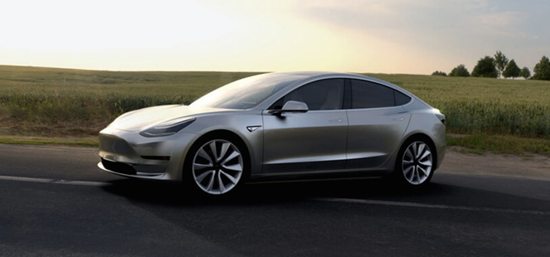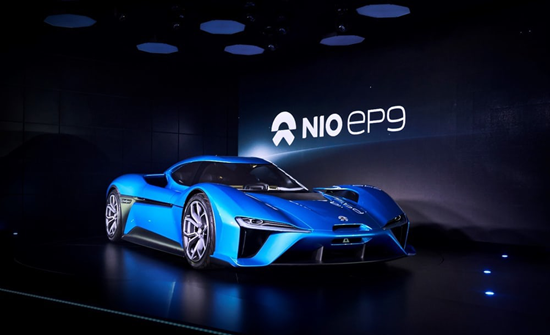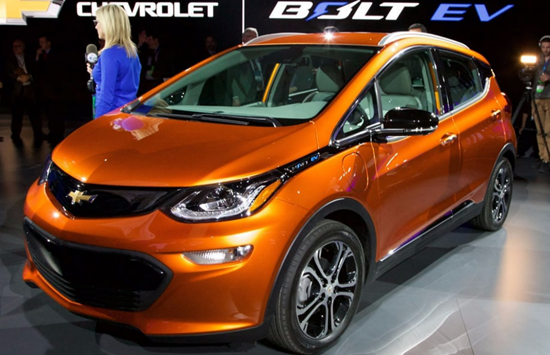
It was a big year for the electric vehicle. In fact, 2016 seems destined to be remembered as the year the EV really started its climb from niche product for trendsetters and environmental eccentrics to viable option for all types of commuters. That storyline still requires a number of automakers to actually follow through on their EV plans, but those plans hatched over the course of a 2016 that saw the much-anticipated Tesla everyman EV; production car-previewing EV concepts from major names like Volkswagen and Mercedes; increased ranges, real and theoretical; more lightning-quick electric supercars; and a few new electric vehicle world records.
As we looked at last month, the electric vehicle finally seems to be coming of age. Things really got underway last year, with big debuts like the Audi E-tron Quattro and Porsche Mission E, both of which are slated for production, but it soared higher throughout 2016 with more global automakers and startups committing to electric futures and showing the first fruits of their labors. Here are what we'd call the most promising, seminal, intriguing and just plain cool of the lot.
1. Tesla Model 3
We generally don't do these year-end lists in any particular order, but given the huge hype machine behind the Tesla Model 3, we feel it's the perfect example of why 2016 was a pivotal year in EV history. So, here it is, our first pick.
After years of building the electric vehicle to beat, a vehicle out of reach for most, Tesla finally revealed the affordable car that will take its electric technology mainstream. The Model 3 looks as sexy as we knew an entry level Tesla could, and its projected performance and price are just as sexy. According to Tesla, the five-seater will offer around 215 miles (346 km) of range, fire to 60 mph (96.5 km/h) in less than six seconds and price in at US$35,000 before incentives. Tesla also plans for a five-star safety rating, Autopilot hardware and performance models.
Tesla revealed the Model 3 in March, and though the car won't go into production until next year, the public responded immediately, reserving more than 325,000 cars within one week of the announcement. The world will continue watching this one very closely as Tesla moves toward production and delivery, but whatever happens in the future, the Model 3 is unequivocally the "Electric Car of 2016."
2. Volkswagen ID
Tesla may have had the EV announcement of the year, but it certainly wasn't the only big EV reveal. Volkswagen was among multiple major global automakers revealing concepts and production cars to lay the foundation of an electric future, and it gets extra credit for showing two electric concepts and jump-starting the electrifying year at January's Consumer Electronics Show. It was there that Volkswagen detailed the Modular Electric Drive Kit (MEB) that will underpin its future EVs. It showed it on a rather disappointing reimagining of the Microbus, called Budd-e, then followed up at the Paris Motor Show with a preview of its first planned MEB-based production car, the ID concept.
The Volkswagen ID is far from a near-production concept car, but it doesn't have to be seeing as how VW won't be introducing the production version for another few years. The company admits that there's still work to do in developing battery and fast-charge technology, but it expects a 250 to 373-mile (400 to 600-km) range by launch. The concept has a 168-hp rear-mounted motor, showcases electric-driven design cues like the grille-free front-end, and previews autonomous technologies like a retractable steering wheel. The fully autonomous driving experience previewed on the concept won't be ready until at least 2025, but Volkswagen plans to have the ID-based electric car ready to go in 2020.
3. NextEV NIO EP9
Time for something less "absolutely game changing...in a few years," more "immediate awesomeness." Beyond production-previewing concepts from name brands, 2016 was also a big year for all-out electric supercars from smaller, less established brands and startups, some of which we'd never heard of before 2016. There was the long-awaited debut of the Rimac Concept One, some details and photos of a high-powered battery bullet from Lucid Motors, a 1,500-hp piece of Singaporean insanity, and the NextEV NIO EP9.
Chinese company NextEV has been honing its high-performance EV skills in the Formula E racing series, where it won the inaugural championship last year with Nelson Piquet Jr. at the wheel. The NIO EP9 brings some of that battery-and-wire prowess to the roads, bringing a full megawatt (1,360 hp) of power from four inboard motors, each with its own gearbox. NextEV says the hypercar is capable of a 7.1-second 0-124 mph (200 km/h), 195-mph (313-km/h) top speed and Nordschleife lap of under 7:06. Last year, it looked like it was going to be Toroidion and Rimac battling for electric hypercar supremacy, but now it might be NextEV and Vanda Electrics, the outfit behind that 1,500-hp car from Singapore, which also has some Formula E know-how behind it.
4. Jaguar I-Pace
Back to business...but sexy, fun business. The latest major production car-previewing concept comes from Jaguar. The I-Pace was a leading contender for coolest concept car at the 2016 LA Auto Show, and it's a concept car with a future, previewing a production electric SUV Jaguar plans to put into rotation in 2018. Jaguar could have just dropped an electric powertrain in an F-Pace and had itself the sexiest family-hauling EV out there, but instead it did the unthinkable: somehow, some way, mashing family sedan, SUV and sports car together and making it look pretty damn good. It also made the distinctive package exhilaratingly electric - 395 hp, 0-60 mph in 4 seconds, and 311 miles (500 km) of range. We're not sure how closely the production car will follow the concept, but Jaguar does promise that it will have the same kind of cross-genre inspiration.
5. Chevy Bolt
The Chevy Bolt seems more like a 2015 story, because that's when we first learned about it, but Chevy's robustly ranged EV was but a concept last year, debuting in production form at CES 2016. It might be the least flashy car on this list, but it's also the one that's actually ready now...not years from now or maybe never. It's also a pretty attractive mix of performance and price, offering a 200-hp electric motor, sub-6.5-second 0-60, and higher-than-estimated 238-mile (383-km) EPA-tested range...all starting at US$37,495 before incentives. With a US$7,500 US federal tax credit, the Bolt slides in under US$30K. It won't get people excited the way the Model 3 or I-Pace will, but it certainly takes a bite out of several of the issues that have been holding EVs back, namely range anxiety and very high prices.
6. Venturi Buckeye Bullet 3
Electric vehicles weren't just making noise at auto shows and electronics conventions this year. They were also out working hard to prove themselves on the track and salt. A number of electric car world records dropped in 2016, including the quarter-mile, the street-legal speed record, and the land speed record. The last was reset in a significant way by the Venturi Buckeye Bullet 3 after several years of weather delays and slower runs. In September, the 3,000-hp battery-powered streamliner set a 341.4-mph (549.4 km/h) world record, surpassing the VBB 2.5's 2010 record by more than 30 mph (48 km/h).
As we saw when we traveled to Bonneville a month before the VBB-3's record, salt conditions weren't ideal this year, and they stymied many other world and national record attempts. But despite those subpar conditions, the VBB-3 pushed the electric vehicle record to within 100 mph (161 km/h) of the piston-engine, wheel-driven land speed record, which stands at 439.562 mph (707.4 km/h). The VBB-3 team has cited the potential for 440 mph, suggesting the electric land rocket has enough in the cells to edge out that 439.5-mph mark, but it'll have to wait for another year to break 400 mph (644 km/h) and climb toward the piston-engine leaders. And if it's keen on putting its electric tech on that same footing, even if only for days or hours, it'll have to do so before one of several piston-engine streamliners with 500 mph (805 km/h) in their sights set a new mark.
7. Faraday Future FFZERO1
If Faraday Future's 2016 game plan was to create a bunch of noise around the debut of its first concept car, grab its very first chance (CES 2016) to reveal said concept car as a rather overdone electric race car (as opposed to a substantive product-previewing road car), then sit back and watch more realistic electric cars continually overshadow it and silence its hype the rest of the year, we'd say it did a great job.
As we looked to make this list in December 2016, we didn't even think about the Faraday Future FFZERO1 until we came upon our January article when scouring through our coverage. Don't get us wrong: we love a good, cutting-edge electric supercar, but Faraday Future hinted at something more substantive than a billionaire's track toy when it first poked its head above ground, so the FFZERO1 felt like a showy letdown.
Still, the FFZERO1 was one of the first and loudest reveals of what became the "year of the EV concept," so it deserves its place here. And while the aero-guided race car body may never end up on roads, the concept's skateboard-style Variable Platform Architecture and battery blocks will go on to underpin more serious vehicles. We reckon those batteries will send power to something just a tad more modest than the FFZERO1's 1,000-hp four-motor drive system when applied to the car that Faraday will show next month at CES 2017.
8. LeEco LeSEE
If we're going to discuss Faraday Future, we should also discuss LeEco, the multifaceted Chinese tech company whose hip Faraday is joined at. LeEco and its CEO Jia Yueting want badly to dethrone Tesla as electric vehicle king, and the LeSEE concept it debuted in April might not be such a bad way to do it. Like the Model S, it has smooth, endearing style, and while the design certainly shows evidence of Tesla influence, it doesn't look like an unapologetic knockoff the way lesser Chinese electric cars do. LeEco plans to tie the LeSEE into its greater tech ecosystem, with visions of an autonomous electric car that serves up LeEco video and other connected services.
LeEco didn't provide details on the powertrain, either at the LeSEE's Chinese debut in April or at its US debut in October, but the company has stressed that it wants the car to be faster than the Model S, with a greater range. The LeSEE is basically just a "first look" at LeEco's developing electric vehicle program, and its future is unclear, especially taking into consideration headlines that LeEco is running into money problems due to the feverish expansion mentality that led it to pursue an electric vehicle program in the first place. It remains to be seen if the company's Chinese Tesla fighter ever becomes a serious proposition, but if it does, we saw it first in 2016.
9. Mercedes Generation EQ
The Mercedes Generation EQ was another big concept car previewing the bright EV future on the way in just a few years' time. And like Volkswagen's CES and Paris efforts, this concept car is more than just a single car, being built on a modular electric architecture designed to deliver an entire family of battery-powered cars. Mercedes' "sporty SUV coupe" styling isn't quite as effortlessly on point as Jaguar's, but the EQ's curves are still attractive. We're not sure we're sold on the idea of a digital rendition of the classic vehicle grille, but Mercedes gets credit for trying something other than carrying the now-unnecessary grille over from ICE cars or blanking the face out completely.
The EQ offers the very familiar promise of 311 miles (500 km) of range by way of its 402-hp electric powertrain and 70-kWh battery pack. Mercedes estimates 0-62 mph (100 km/h) at under five seconds. It plans to roll out the Generation EQ-based production car in 2020, by which time we reckon it'll have some shiny, new autonomous features to include.
10. Hyundai IONIQ Electric
Instead of promising an onslaught of modular architecture-based electric vehicles in the 2020's, Hyundai went a different route this year, unveiling three same-platformed production cars plugged into electric power. The new IONIQ gives buyers a choice of hybrid, plug-in hybrid and full battery power, becoming the world's first car with three different electrified powertrain options.
The battery-powered IONIQ Electric relies on a 118-hp electric motor and 28-kWh battery pack for up to an estimated 110 miles/177 km (US) of range and 125 mpg-e rating. The IONIQ managed to stay in the headlines long after its Geneva debut, experimenting with autonomous capabilities, earning its own land speed record at Bonneville, and gaining an "IONIQ Unlimited" subscription-based purchase option. It already launched in Europe and will start rolling out in the US this winter.










No comments:
Post a Comment
Please adhere to proper blog etiquette when posting your comments. This blog owner will exercise his absolution discretion in allowing or rejecting any comments that are deemed seditious, defamatory, libelous, racist, vulgar, insulting, and other remarks that exhibit similar characteristics. If you insist on using anonymous comments, please write your name or other IDs at the end of your message.